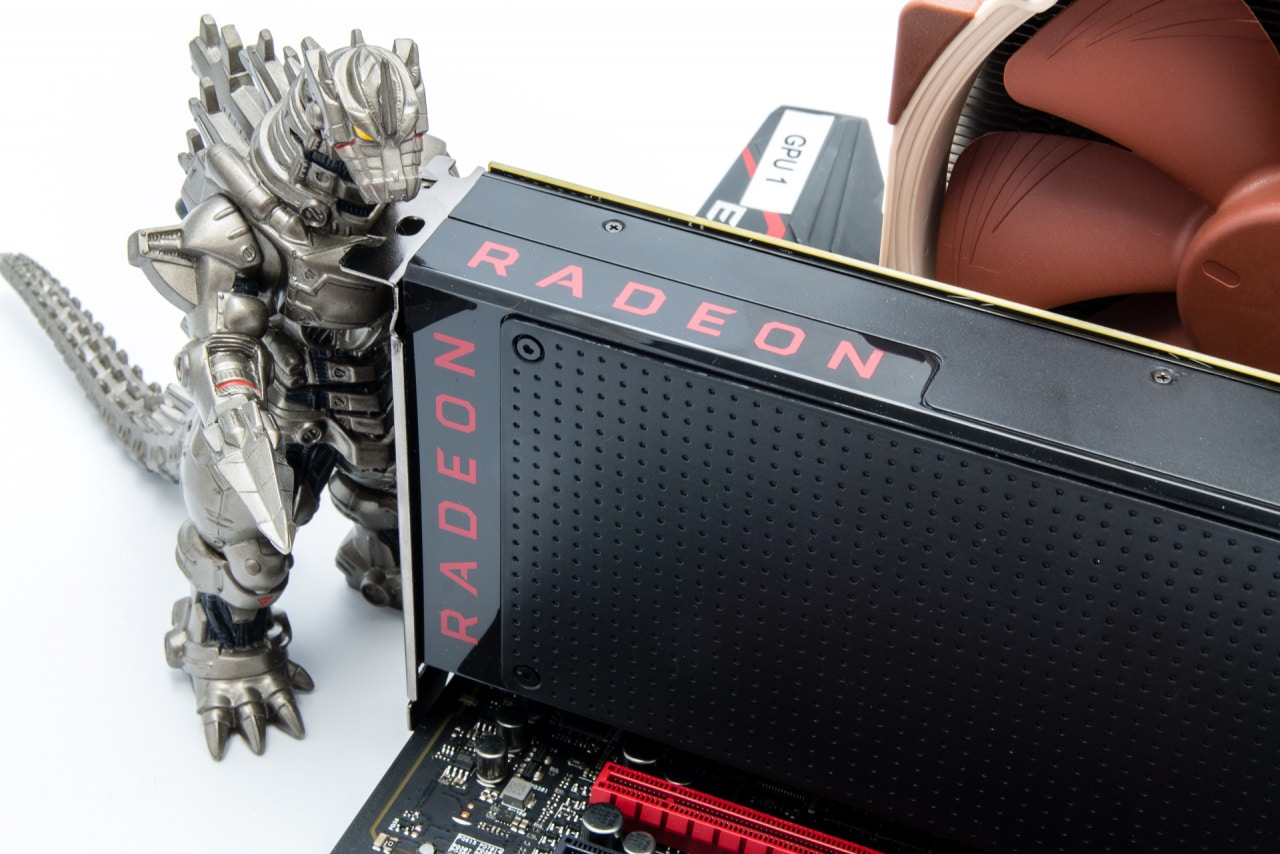After a long period of silence in the graphics card market, Nvidia is in full swing to roll out its new Geforce RTX series, which will soon consist of three models. From AMD, everything pointed to the fact that it would take until 2019 before they had something new, but now more and more point to Polaris getting new life before the 7-nanometer Navi enters the scene.
For a long time, rumors have abounded about a shrinking of the Polaris architecture to 12 nanometers, which would then provide better energy efficiency and make it possible to reach higher clock frequencies. Now publish the Twitter profile Tum apisak results on the newcomer that goes by the name Radeon RX 590.
Performance: AMD Radeon RX 590 and 3DMark Time Spy
model | Time Spy (GPU Score) | Difference |
|---|---|---|
Nvidia Geforce GTX 1070 Ti (8GB) | 6,815 points | +43% |
AMD Radeon RX Vega 56 (8 GB) | 6 331 points | +33% |
Nvidia Geforce GTX 1070 (8 GB) | 5,825 points | +22% |
AMD Radeon RX 590 (8 GB) | 4,759 points | – |
AMD Radeon RX 580 (8 GB) | 4,266 points | -10% |
Nvidia Geforce GTX 1060 (6 GB) | 4,175 points | -12% |
Comparative reference values are taken from SweClocker’s own test suite.
In the performance test 3DMark Time Spy, the Radeon RX 590 gets a graphics score of 4,759, which is well above both the RX 580 and the Geforce GTX 1060. At the same time, it is well behind the GTX 1070. In terms of performance, the graphics card is thus in a class where Nvidia is currently lacks a clear answer.
According to previous information, it is basically about the same architecture that was released in the summer of 2016, also how the circuit is built should be the same. It is thus the manufacturing technology that stands for the news and makes it possible to squeeze out better performance via higher clock frequencies.
This can also be seen in UL Benchmark’s database, where the clock frequency for RX 590 is set to 1,545 MHz. This is approximately 15 percent higher than the turbo frequency of the Radeon RX 580 at 1,340 MHz and is also in line with the performance increase in Time Spy.
Furthermore, it appears that the graphics card is equipped with 8 GB of memory in 2,000 MHz, which gives an effective clock frequency of 8,000 MHz with GDDR5 and a theoretical bandwidth of 256 GB / s. In other words, it does not look like AMD will take the step over to GDDR5X with the Polaris 30 graphics circuit.
Previous information has spoken of a launch of the Polaris 30 on 12–15 October, something that in the end does not seem to have been the case. It is thus still not known when AMD’s polishing of Polaris will be released.















